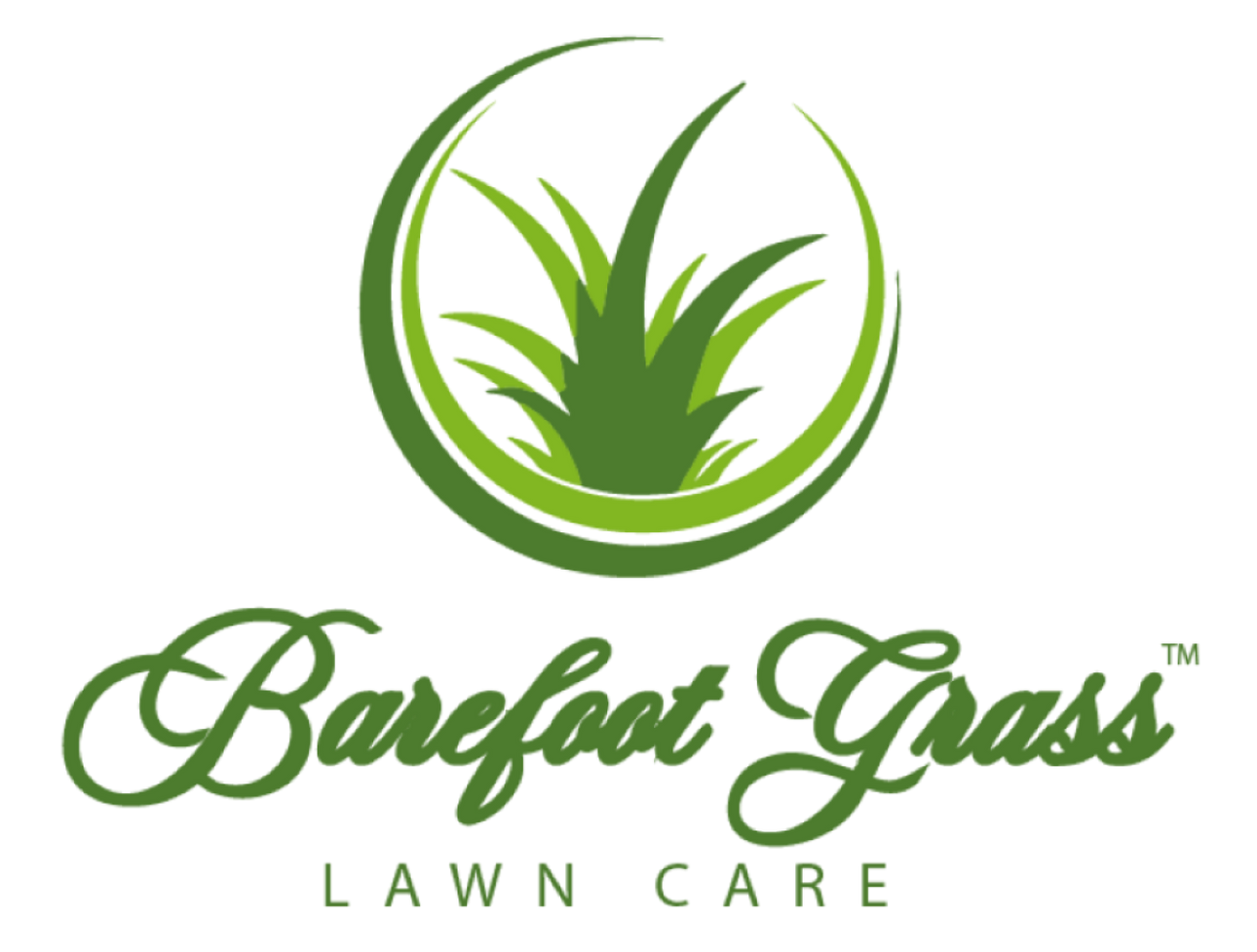Blog
Blog
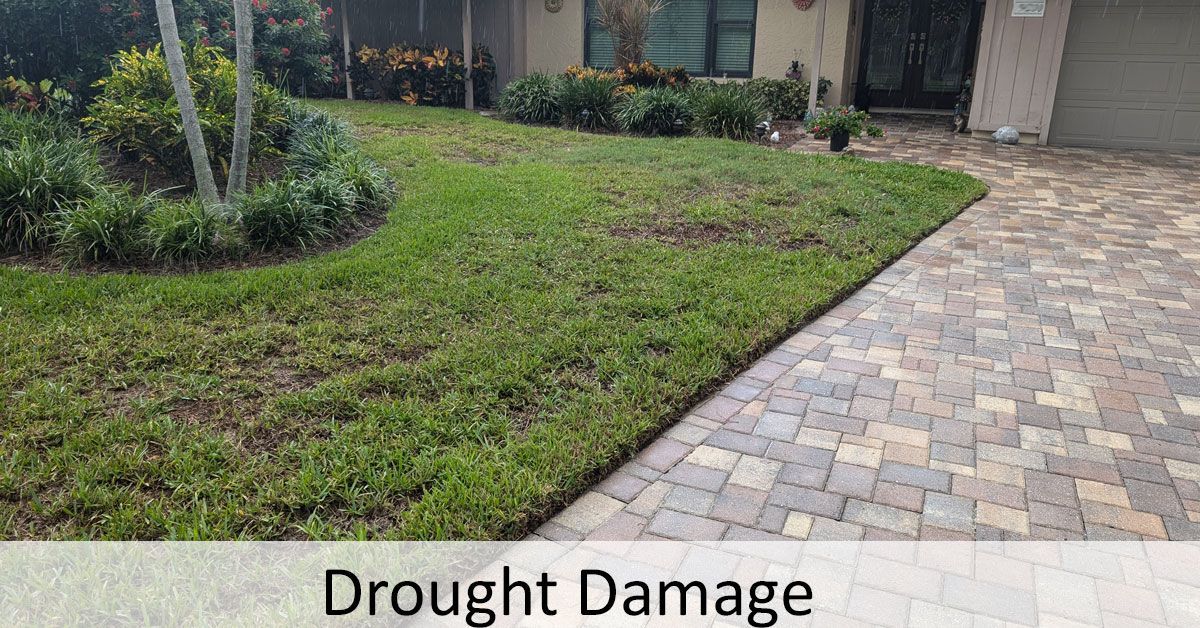
by Rick Orr
•
28 Aug, 2024
Post Drought Recovery Many of the service calls the past couple of weeks are from customers concerned about brown areas of their St Augustine lawns - they see brown irregular areas of the lawn surrounded by greener St Augustine grass. They logically assume that since the other parts of the lawn are green, there must be something attacking the brown areas. The sad truth is those brown areas were killed by the recent drought and draconian once a week water restriction. How It Happens First, your lawn is not uniform - shade, open sun, good soil, poor soil areas, etc. respond differently to water stress. Some areas survive, some areas are damaged to various degrees, and some areas die. At the end of the drought, rain and irrigation reduce the water stress, surviving areas return to their natural beauty and damaged areas are in various stages of recovery. But the dead grass does not turn green. It is the dead areas surrounded by recovered green grass that raise the question “What is going on with the brown areas? It wasn’t bugs or a fungus that caused the brown areas, it was the drought and water restrictions. The drought was bad enough – that alone would have destroyed lawns. But to enforce draconian water restrictions on self-supplied irrigation (Irrigation supplied by reclaimed, well or surface water) insured acres of the urban turf would be destroyed. The Solution Dead areas will have to be removed and replaced with sod, or you can wait as surrounding surviving areas repopulate the area. Remove and replace is what it sounds like – remove the dead grass and replace it with sod. Waiting for the surrounding areas to repopulate takes time. St Augustine will spread 8” to 10” in a growing season (February – October). For example: a dead spot 20” in diameter and surrounded by healthy grass will repopulate in one growing season. The addition of plugs will help speed the process. Note: Do not remove the dead grass when repopulating from surrounding areas. The dead grass acts like a mulch keeping the soil cool and moist. Weeds may invade the area before the St Augustine spreads. The weeds will not stop the St Augustine from spreading and soon, with a little TLC, you will have more St Augustine and fewer weeds. Other Resources You can learn more at iloveturf.com: Post Drought Recovery of St Augustine Lawns How to Set Up Your Irrigation System to Keep a St Augustine Lawn Alive with 2x Week Watering Restrictions
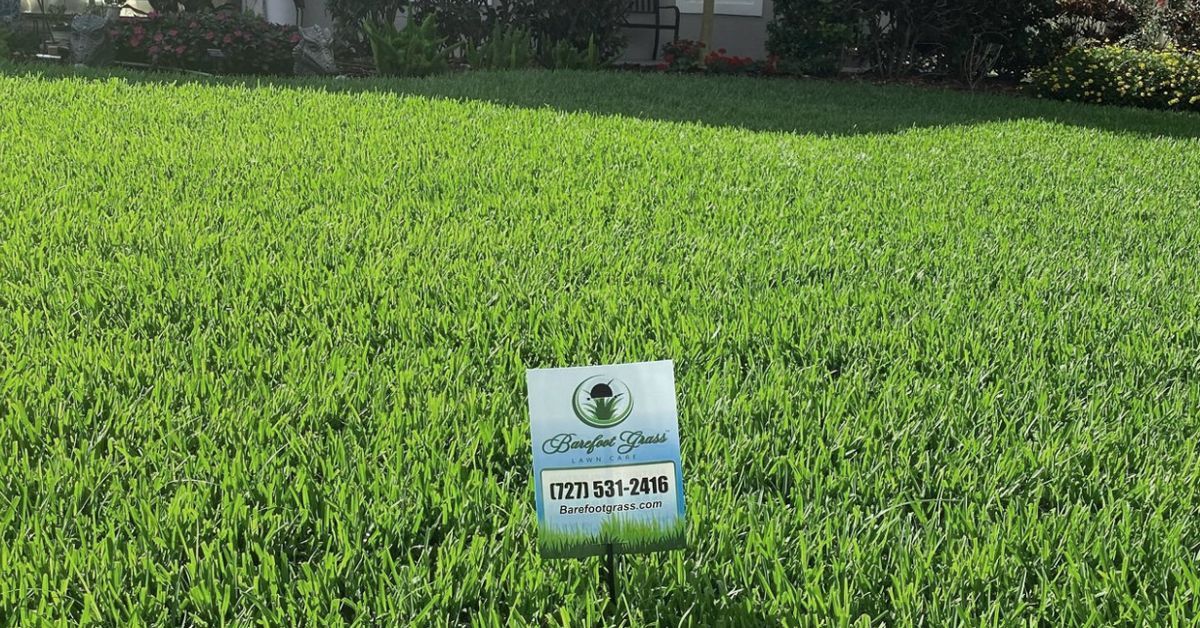
by Rick Orr
•
06 Aug, 2024
Lawn Spraying and Mowing At Barefoot Grass, our service is designed for regular mowing. Our products cling to the leaf blades - like iron filings to a magnet - creating a nutrient/insecticide coated leaf. With each mowing the coated clippings fall into the canopy where the insecticide goes to work on the bugs and the clippings become nutrient rich organic source for recycling. With every mowing your lawn is fertilized and treated for bugs whether it is right after we treat the lawn or a week later – the results are the same. Just don’t bag the clippings. As to safety, the products are safe for people and pets. It is best to stay off until dry to prevent tracking outdoor products indoors. Mowing after a service is safe for lawn maintenance workers – again it is best to wait until dry – but if you don’t, avoid tracking the clippings indoors by removing your shoes or cleaning them before entering your home. Learn more here: Why Does the Sign Say KEEP OFF UNTIL DRY?

by Rick Orr
•
29 Jul, 2024
Peak sod webworm season is now until October. The sod webworm is the caterpillar stage of those little moths you see flitting about the lawn. Moths are Harmless The moths are harmless and moths in your lawn is not a sign you have sod webworms. However, the tiny ½” long caterpillars can chew through leaves leaving it looking like a drunken gnome with dull scissors tried to mow your lawn and passed out before he finished. Not Lethal The good news is sod webworm damage is rarely lethal to your lawn. It can be ugly but not lethal. There are easy ways to treat sod webworms and recovery takes only a few days. Barefoot has you Protected At Barefoot Grass, our 9-application premier lawn care service with monthly insecticide treatments during the peak sod webworm season is perfect for preventing sod webworms damage. Other Resources You can learn more at iloveturf.com : Sod Webworms are Active in Pinellas County and Causing Damage to St Augustine Grass Lawns Lawn Moths/Sod Webworms
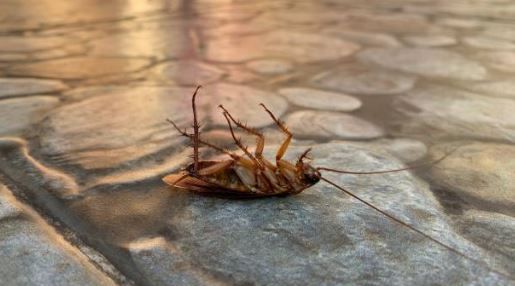
01 Jul, 2024
Florida's warm and humid climate makes it a paradise for roaches. These pests can invade homes and businesses, causing significant distress and potential health issues. Here’s a comprehensive guide on how to effectively manage and eliminate roach infestations in Florida. Understanding Roaches in Florida Roaches, especially the American, German, and Palmetto bugs, are common in Florida. They thrive in warm, moist environments and can be found in kitchens, bathrooms, and other areas where food and water are readily available. Prevention Tips Keep It Clean: Roaches are attracted to food and water. Regularly clean kitchen counters, sweep floors, and avoid leaving dirty dishes in the sink. Store food in airtight containers and keep pet food sealed. Eliminate Moisture: Fix leaky faucets, pipes, and appliances. Use dehumidifiers in damp areas like basements to reduce moisture levels that attract roaches. Seal Entry Points: Inspect your home for cracks and gaps in walls, windows, and doors. Use caulk or weather stripping to seal these entry points and prevent roaches from entering. Proper Waste Management: Dispose of garbage regularly and use trash cans with tight-fitting lids. Keep outdoor garbage bins away from your home’s perimeter. Effective Control Measures Bait Stations: Use commercial bai t stations strategically around your home. These baits attract roaches, which then carry the poison back to their nests, effectively killing the colony. Insect Growth Regulators (IGRs): IGRs prevent roaches from maturing and reproducing. Combine them with baits for a more effective solution. Professional Pest Control Services: For severe infestations, consider hiring a professional pest control service. They have access to stronger pesticides and can implement comprehensive control strategies. Natural Remedies: Diatomaceous earth, boric acid, and essential oils like peppermint and eucalyptus can deter roaches. Sprinkle these substances in areas where roaches are commonly seen. Long-Term Solutions Regular Inspections: Conduct routine inspections of your home for signs of roaches and other pests. Early detection can prevent larger infestations. Home Maintenance: Regularly check and maintain your home’s plumbing and structure to ensure it remains inhospitable to roaches. Landscaping: Keep your yard well-maintained. Trim bushes and trees away from your home and remove leaf litter and other debris where roaches can hide. Conclusion Roaches are a persistent problem in Florida, but with diligent prevention and effective control measures, you can keep your home roach-free. Maintain cleanliness, eliminate moisture, and seal entry points to prevent infestations. Use a combination of baits, IGRs, and professional services for active control. By following these strategies, you can enjoy a roach-free environment in the Sunshine State. For more tips and professional pest control services, feel free to contact us or visit our website. Stay proactive and keep those roaches at bay!
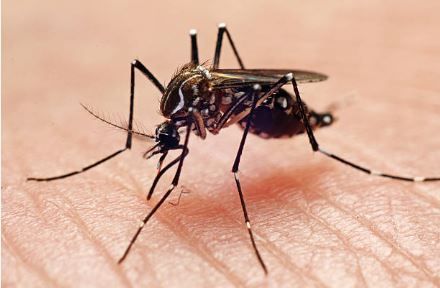
24 Jun, 2024
Florida, with its warm climate and abundant water bodies, is a haven for a variety of wildlife. Unfortunately, this paradise also attracts one of the most notorious pests: mosquitoes. These tiny insects can turn outdoor activities into miserable experiences and pose significant health risks. Here's why mosquitoes are a problem in Florida and why hiring a professional pest control company is the best solution to keep them at bay.
Phone: 727-531-2416
Address: 12505 Starkey Rd. Largo, FL 33773
Business Hours
- Mon - Fri
- -
- Sat - Sun
- Closed
Emergency Service Available






Content, including images, displayed on this website is protected by copyright laws. Downloading, republication, retransmission or reproduction of content on this website is strictly prohibited. Terms of Use
| Privacy Policy
